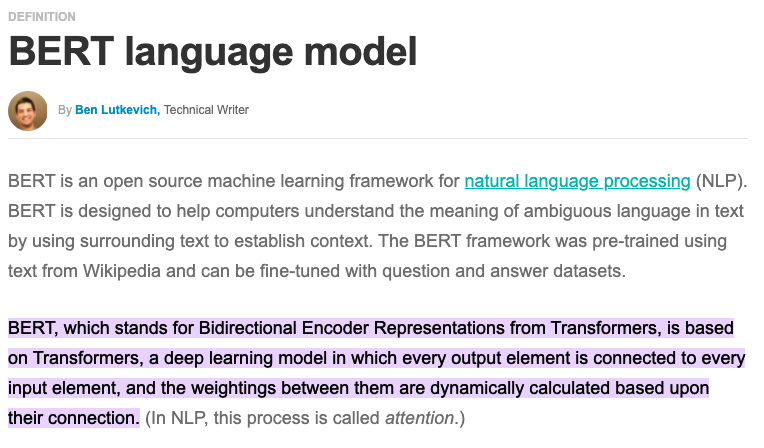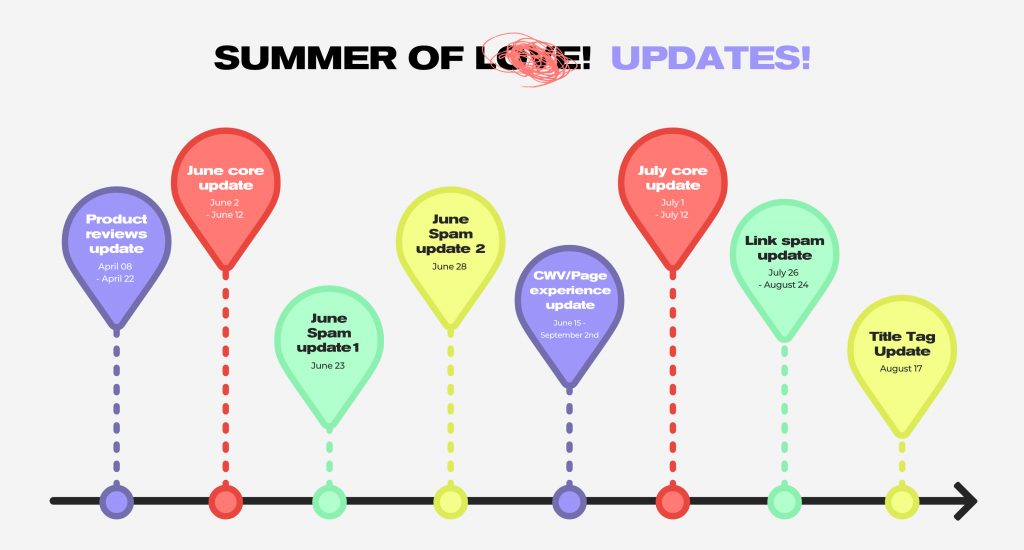8 September 2021
SEO in 2021: 5 reasons why your website won't rank
Read More

Believe it or not, 2020 really shook up the SEO community, as well as everyone else.
Consumers used search engines for everything. From banana bread recipes and coronavirus symptoms, to up-to-date business information or a properly functioning take-out delivery service – people soon became used to having accurate information at their fingertips.
As we transition into a post-pandemic world, consumer demand is just as high as ever, and Google aims to deliver. If you plan to stay ahead of their curve, having a strong SEO strategy has never been more important – so where does that leave your business?
Well, it’s kind of a bit of both.
Google gets its kicks by moving the goalposts that online businesses have to shoot their websites through. Its core algorithm is regularly updated with new criteria that needs to be met on (what feels like) a month-by-month basis.
They actually began initiating some of the trends and updates we’re going to discuss below pre-pandemic, with the increase in online activity influencing the move towards delivering more accurate results to users queries, as well as a better overall user experience.
That said, whilst change has certainly been afoot, the importance of ‘relevancy’ has changed very little. That is to say; adhering to the EAT principles (expertise, authoritativeness, and trustworthiness) of content creation is still relevant, and always will be.
Back in 2019, the BERT update rolled out. This was a huge step forward in the algorithm’s capacity to understand the semantics separating one search from another, essentially mimicking what the human brain does in a split second. BERT – or ‘Bidirectional Encoder Representations from Transformers’, for something more snappy – was one of many steps in a long line of updates geared towards serving more relevant results for increasingly more complicated queries.
BERT is just one example of a whole bunch of neural network algorithms designed to constantly collect and collate patterns – in this case, global speech patterns in language use. This gave rise to marketing folk – the search engine optimisers or SEOs – having far greater accuracy in optimising for things like voice search and more complicated long-tail phrases that were previously out of reach.
You should all be optimising for Featured Snippets in your long-form content already, after all, they’ve been a yardstick of well-optimised content for over 7 years. But since February 2021, the new kid on the block has been passage ranking. The update provides yet another opportunity for well crafted, relevant content to rank specific sentences of copy with specific queries.
You’ll have doubtless seen this in action, but here’s an example to illustrate my point. When I search ‘What does BERT stand for’:

We’re presented with a very specific result that looks like a featured snippet on the SERP:

But is actually a very accurately matched passage from a relevant page result:

It’s worth pointing out that Google has stated that how much of the page they index will not change for passage ranking, it is merely the way in which they index the page.
The whole page from top to bottom will always be crawled, so the usual best-practices for indexation should 100% still be adhered to, like submitting a sitemap & presenting a robots file. Well-managed status codes and redirects, adhering to mobile-first indexing, a decent internal linking structure and tackling duplicate content issues are still essential too.
Having quality content on your site is more important than ever before. Knowing the whole page is still under Google’s gaze puts more emphasis on longer form, with a focus on clearly marking out each section of your content by topic, subtopic, sub-subtopic, sub-sub-sub… I’m kidding – through using headers (h2s, h3s) as signposts for users.
There’s some contention around the validity of using headers as an SEO tactic these days, especially with the level of sophistication that the core algorithm has in finding their own patterns in content, rather than relying on clues left behind by us. That said, I tend to stick to the rule that if subtitles make the content easier to read, then headings are a great way to do just that.
Passage ranking marked the first significant update to Google’s ranking algorithm in 2021, paving the way for a heap of changes throughout the summer that should offer users a better experience. They’ve also given SEOs a few more hurdles to jump before they can take home the gold, but what’s new there?

The official updates (or those acknolwedged by Google) that gradually rolled out between April and present day were as follows:
A summer of updates have left some sites thriving and some really suffering in the SERPs. Winners from the core updates appeared to be older, well established sites – suggesting the focus may have shifted back to more ‘traditional’ SEO factors, like domain age and backlinks. Impacted sites seem to have been those with thin content or those whose content centres around YMYL topics, like finance, law, purchase recommendations and reviews, education, and health. Further strengthening the argument for good quality, unique and authoratitative content wherever appropriate. CWV left no one behind, which we’ll come to later, whilst link spam has had a mixed reception in the community – though it’s still very early days.
“That’s all well and good”, I hear you say, “But what does this mean for me?”
What should you be doing (as a business or individual) to stay in the running for organic visibility? Well, there are some simple things you can – and should – be doing right now to give you even the slightest edge on your competition.
I’ll come to the not-so-simple things in a bit.
Organic rankings are one way of measuring the efficacy of your SEO efforts, but the ultimate goal should be driving conversions on-site. By ranking higher up the results page, the likelihood of gaining more organic conversions increases. Sort of a chicken and egg scenario.
Your content, backlinks and technical functionality are what (broadly speaking) rank your site, and they are undoubtedly the big hitters of SEO. However, encouraging people to click is something that is often overlooked because, “meta descriptions don’t affect rankings”. But I’m here to tell you that paying attention to the little things can actually make a big difference to your click through rate. Here’s a few to try.
If you’re leveraging an FAQ section, or multiple FAQ blocks on individual pages for informational queries / long-tail terms (which you should be), then make sure you’re also implementing FAQ schema markup, this will significantly increase the likelihood of your FAQs being presented in search results and thus convince more users of your authority within your niche.
Taken from your URL structure, Schema markup, literal breadcrumbs or ‘taxonomy’ – breadcrumbs are magical morsels that help users to understand the structure of your site and where to go next on their journey. They also enable crawlers to better understand the relevancy of a given page’s content, ergo, they’re great for SEO benefit too. As best practice, you should make sure all are keyword rich and relevant to the page’s focus, whilst taxonomies should preferably mimic your URL structure.
As with Meta Descriptions; not a ranking factor, and not always used by Google even if specified. But as a general rule – be unique, don’t be spammy and if you have the opportunity, test different variations to encourage more clicks. Try not to rely on using the same structure or boilerplate titles e.g. ‘Home | Website Name’ or ‘Blog | Website Name’. Generally speaking, unless your brand is already well known or you’re really trying to build brand authority, including it within the title isn’t really going to encourage more clicks.
The topic of the page and its contents should be optimised towards what people are searching for, so use the title as a hook to draw them in. And for even more relevancy and perhaps a little immediacy – try including numbers, like dates / days / year, particularly to topical content.
Note: On August 17, Google rolled out a new way of generating title tags for your result on the SERP (remember they don’t have to take the title tag you present). Although the SEO community was up in arms for a few days, bemused as to why lovingly crafted titles laid out in reliable html were being usurped by H1s and even URL strings, Google fessed up by the 24th. Stating this was part of a larger move to deliver an accurate title for the content of each page, and will help remove the chance of spammy, keyword-crammed titles filling up the results page.
The jury’s still out as to whether this has actually worked, with a lot of the community reporting significant drop offs in traffic suspiciously close to the roll out. They still say that around 80% of titles will be taken from the tag you submit, and recommend we continue to write our own, especially if you’re already doing it right. Barry Schwartz AKA @rustybrick had a lot to say about it, his twitter is worth watching for any and all SEO related updates:
ICYMI: Google: Do not blindly replace your HTML title tags with the title Google selected, sometimes Google’s algorithms get it wrong… https://t.co/sg6XSM2jf7 pic.twitter.com/F9Hs2z8SyN
— Barry Schwartz (@rustybrick) August 31, 2021
Creating unique and eye-catching meta descriptions are a simple way of improving your click through rate, there are no hard and fast rules so be creative and prepared to test different wordings. A vital thing to remember is to treat the importance of crafting a unique meta description inline with the value of the page. Consider that:
SO, if you’re working on a very important page and you’re expecting a lot of traffic – spend some time writing something to try and encourage clicks. If you have 100s of products where clicks directly from an organic listing on the SERP are going to be slim to none – work out a basic convention that you can apply en masse, without duplication, of course.
Are your visitors having a good time? Well, Google’s newest ranking factor focuses on page experience, aiming to give tangible metrics to common issues that affect how we’re able to interact with a web page.
The core performance metrics are dubbed; Largest Contentful Paint, First Input Delay & Cumulative Layout Shift (plus 4 non-core vitals).
This can sound quite technical (and it can get quite technical) but the crux of it is: How quickly does the page load and can the user interact with each element of the page without incident.
LCP is largely related to pagespeed within the core web vitals, so focus on building simple, attractive web pages that work lightning fast on mobile (see; mobile first indexing March 2021) and you shouldn’t go far wrong. Note, ‘shouldn’t’ – LCP is a big can of worms, open with caution.
Interactivity with the page is covered by FID, which is to say; the time it takes from when a user first clicks a link or taps a button, to when the browser is able to respond to that interaction. The main FID issues tend to be elements which make weighty requests on your machine’s processing capabilities (governed by your CPU). Loading bulky scripts, bloated CSS and hefty third party code generally impact FID dramatically, so the aim should always be to create a site that is as lightweight as possible.
Arguably the trickiest vital of the bunch seems to be CLS – layout shift refers to elements of a page that inhibit stability, not load time. Common foibles include flash of invisible text (FOIT), unstyled text (FOUT) or unstyled content (FOUC), plus elements like banners and images that magically appear after the page has (seemingly) loaded. Optimisations and changes for CLS are on a site by site basis as it depends on how they’re built – but testing your site in PSI, Lighthouse in devtools or with webpagetest are all good places to start.
So after all this change, where does this leave your organic presence? Have you seen a drop off in traffic this summer, or have your rankings skyrocketed with little change from your end? It will depend on how your site is structured, the nature of your content and how well optimised it is.
How well-established your backlink profile is and whether you’re passing those pesky CWV metrics.
The key to finding out why, whether good or bad news, is always to audit. That way you can remedy the problem, or replicate when you find a combination of techniques that tick enough of Google’s boxes to rank competitively.
To come full circle on you all; have the updates this summer brought about a movement of change for SEOs, or is it more of the same? The answer is still, a bit of both, but bare these questions in mind and you won’t go far wrong:
Always keep in mind that Google strives to provide a better experience and more accurate information for the user. Figure out who your target audience is and craft your content to meet their needs. Technically speaking, your website should be thought of as a tool, to stay effective it needs to be constantly honed and kept as sharp as the day it was made. In other words; be prepared to audit, amend and test to make sure you stay ahead of the rest.


Still the same great data driven services, but now with a different name